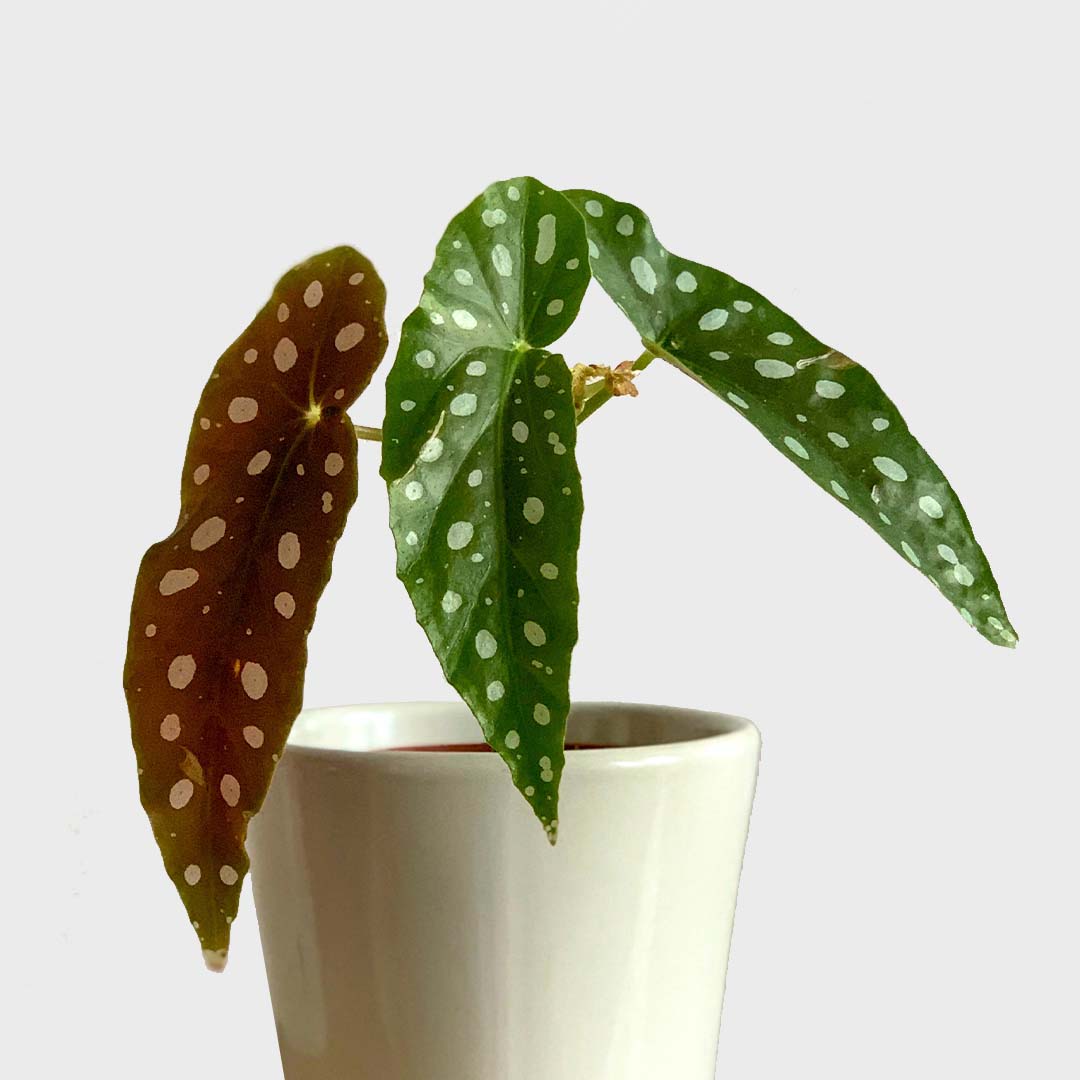
Deliver to
Austria
 English
EnglishMedium light
Water once a week
Toxic
Air-purifying
The Begonia likes to be placed in a spot with lots of bright, indirect light. Not all species tolerate bright light well. They can be sensitive to (direct) sunlight, which can scorch their leaves, so it's best to place them near a window that gets filtered light. It is best to place the plant in medium bright light. Although some species like partial shade best.
Watering a Begonia plant is probably the most challenging task to nail down. Begonia plants like to be kept evenly moist but don't like to be overwatered. Before watering it is important to check the soil, by sticking a finger in the soil. If the top of the soil feels dry you're allowed to water the Begonia. Make sure to water around the base of the plant, and avoid getting water on the leaves or flowers.
Begonias like high humidity as well, so it's a good idea to mist them regularly or place a tray of water near them to increase humidity.
The Begonia uses a lot of energy from spring onwards to make new leaves. As a result, the plant needs extra nutrients. You can provide these nutrients by plant nutrition. We recommend giving plant nutrition once every two weeks. From spring until autumn. After autumn and in winter it is better not to give extra nutrients. In the autumn, plant nutrition can actually be harmful for the Begonia!
Repotting the Begonia is not necessary every year. The plant is a fast grower, but its roots are really thin. We recommend repotting the plant every 2 years, so it gets new nutrients and more room for root growth. The airier soil is also very good for the water flowing through. The best period to repot is spring.
Begonia plants prefer temperatures between 15 and 24 degrees Celsius. They can be sensitive to cold drafts, so make sure to keep them away from windows or doors that are frequently opened.
Prune your Begonia regularly to keep it looking neat and tidy. Remove any dead or yellowing leaves, as well as any flowers that have faded.
The Begonia is a plant that is very sensitive to mildew. To prevent diseases and vermin you can regularly clean the leaves. Do you come across mildew or other vermin at the Begonia? Then use chemical pesticide.


Begonias are mildly toxic. The plant’s juice and sap contain microscopic, poisonous needle-shaped crystals, but its roots and underground tubes are especially toxic.
They are irritating to pets and humans, and can prompt allergic reactions in them. If ingested by pets, they cause intense burning and irritation in the mouth and can also lead to excessive drooling and vomiting.
Yes, it can! Begonias can flower if cared for properly. This flowering does, however, cost the plant extra energy. If you notice that the flowers have finished blooming, it is best to remove them.
Begonias are not the largest of indoor plants. The maximum height of a Begonia varies between species. Indoor Begonia Maculata plants can reach a height of around 150 cm. There are also Begonia species which only reach 50 cm in height.
Yes, you certainly can. Check out our tips on how to propagate the Begonia.